Global maritime domain awareness and vessel analysis
ReleasesLearn about our latest improvements
Arming research analysts with hidden clues to their maritime domain
Global maritime domain awareness and vessel analysis
ReleasesLearn about our latest improvements
Arming research analysts with hidden clues to their maritime domain
webinars
Online events about new research, Starboard developments and effective analysis techniques
• Learn how others are getting the most out of Starboard.
• Provide feedback and inform what Starboard works on next.
• Short, interactive sessions.
Online training workshops
Learn more about recent Starboard developments which support powerful analysis, and collaborative monitoring, control and surveillance operations.
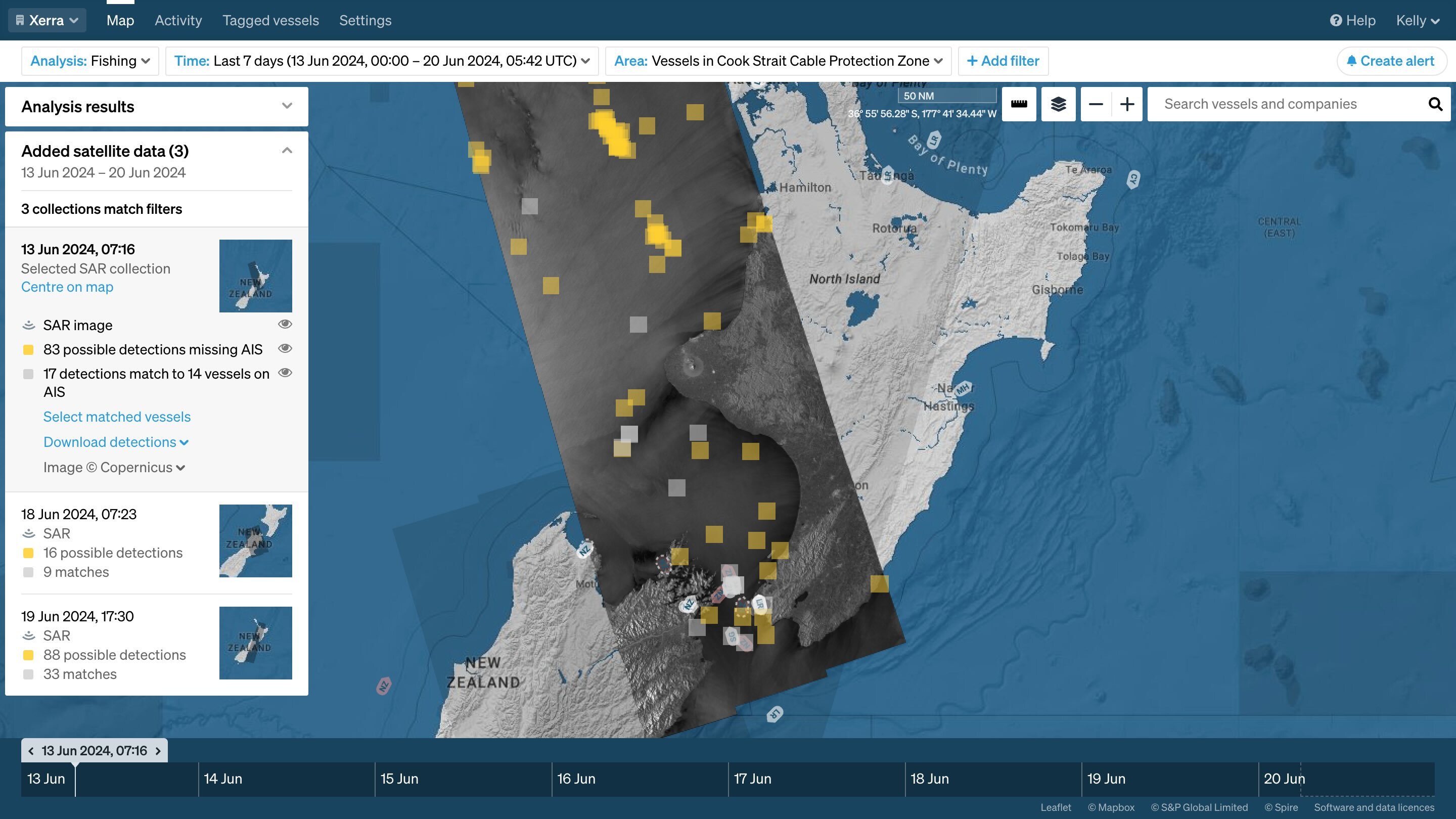
Sentinel-1 imagery over New Zealand provides persistent monitoring covering coastal areas.
Masterclass: Collaborating with actionable intelligence from IUU risk indicators
Megan Charley, Maritime Domain Awareness Analyst at Starboard, discusses the role of IUU risk indicators and collaborative intelligence.
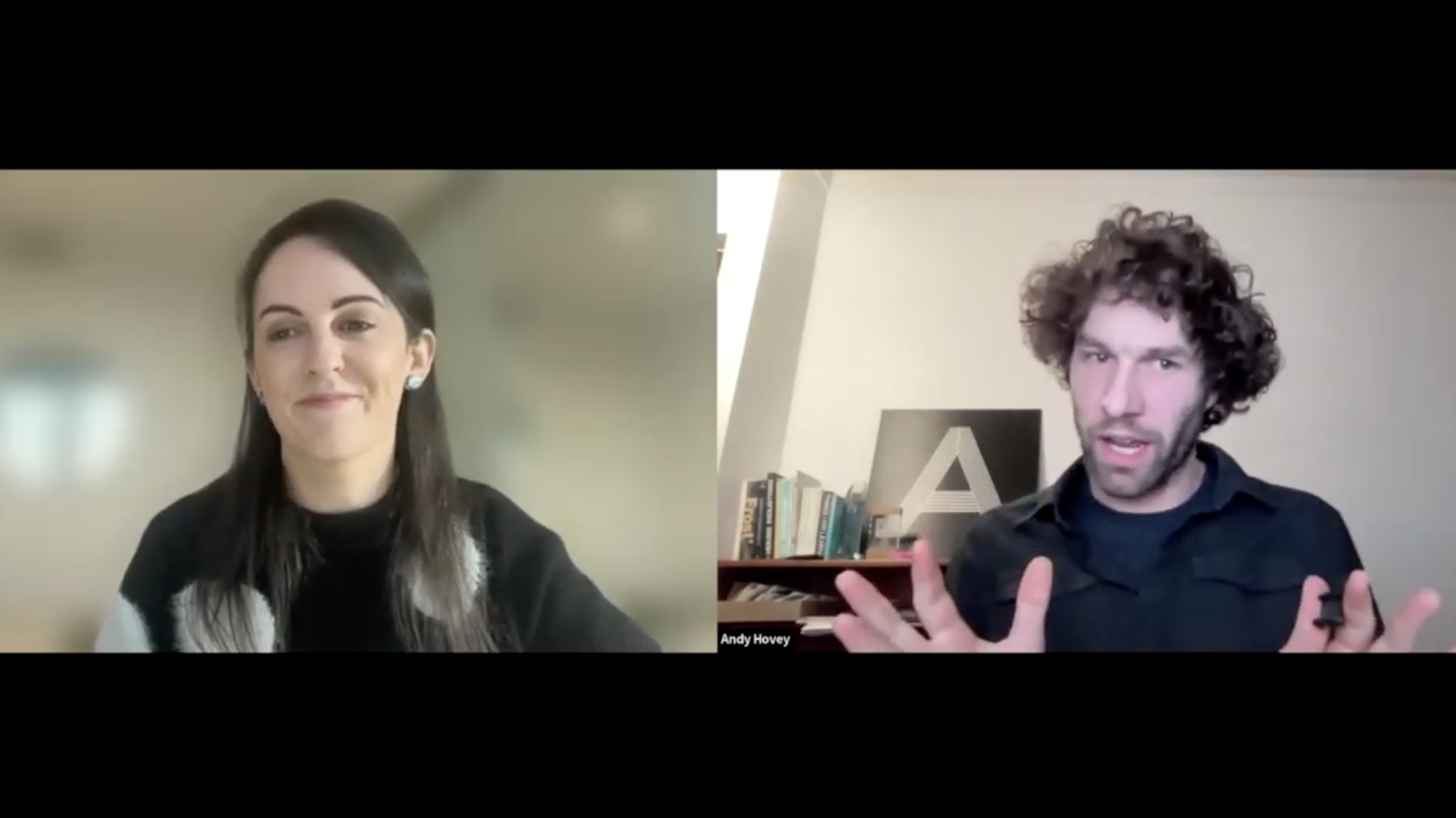
Learn how Megan has been using satellite imagery, Starboard’s risk framework, analytics tools, and open-source intelligence to enhance the intelligence lifecycle and improve fisheries monitoring, control, and surveillance.
Hosted by Andy Hovey, Starboard’s Chief Product Officer.


Expert insights: Persistent monitoring and planning for high risk areas of interest
Moritz Lehmann, Oceanographer and Sales Engineer at Starboard, explores tools for planning and protection of offshore infrastructure and installations.
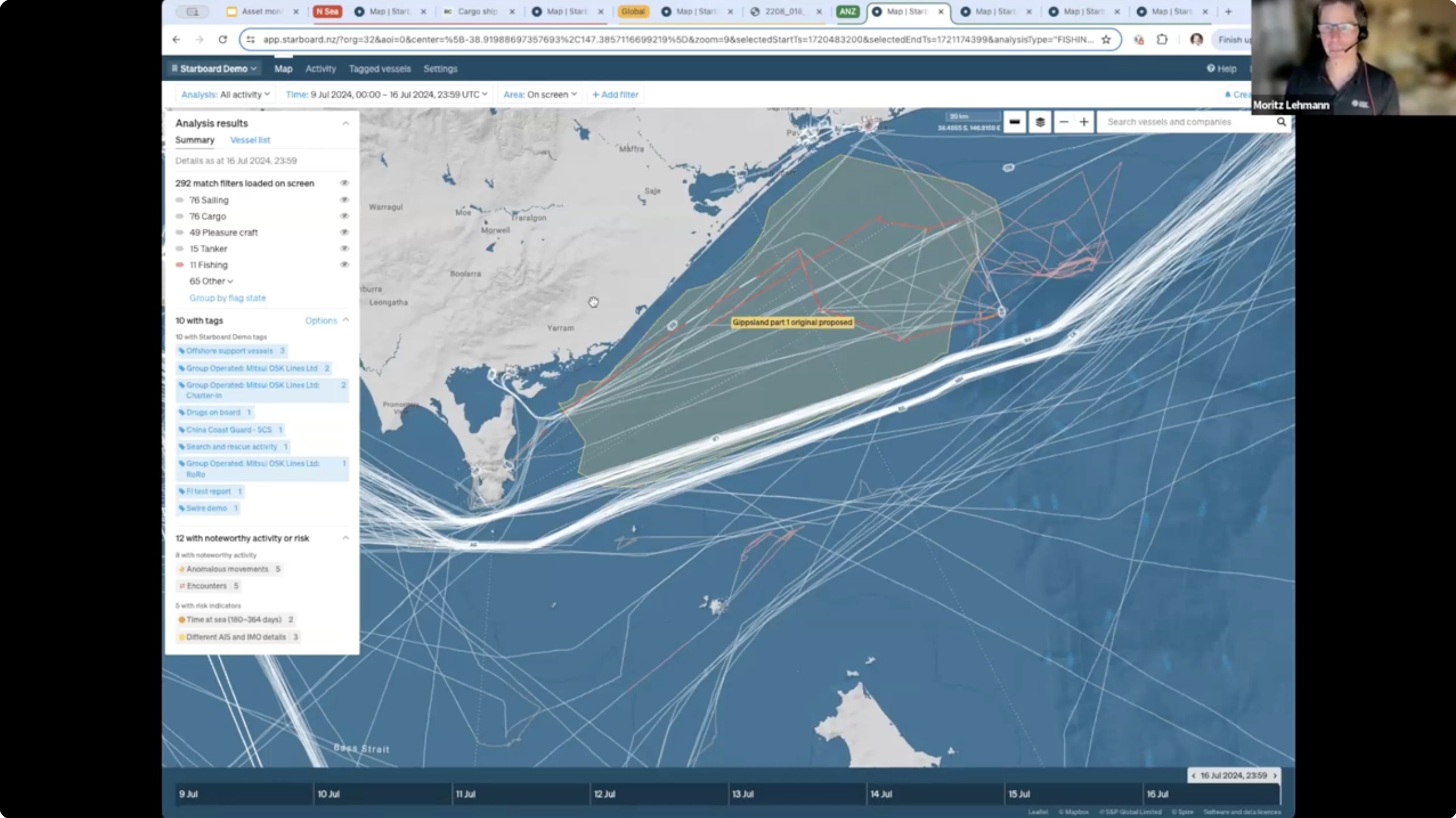
Discover how persistent satellite imagery, oceanographic data, and Starboard’s evolving alerting framework can identify real-time risks in your area of interest and support planning for offshore asset development like wind farms and cable landings.
Hosted by Andy Hovey, Starboard’s Chief Product Officer.


From fish to fibre: Applying maritime domain awareness technology to the protection of subsea cables
Learn more about the role of maritime situational awareness for safeguarding subsea infrastructure. As the connectors of the digital economy, these cables are vital assets, yet they are facing escalating threats from the expanding use of our oceans and potential malicious activities.

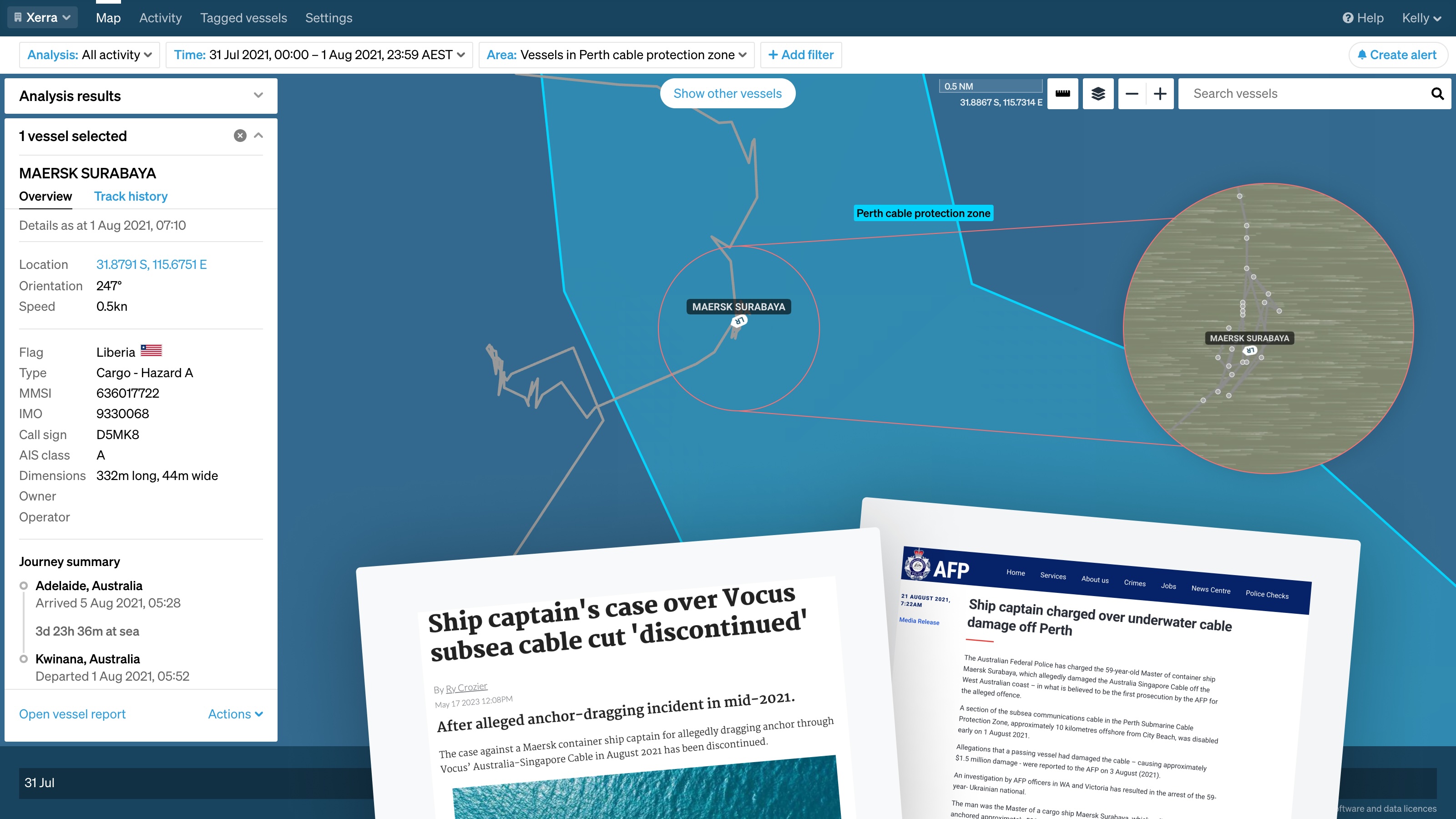
In 2021, a single anchor drag incident resulted in $1.5 million damages, leading to criminal charges against the vessel’s captain. Watch the webinar to hear more this case study and others.
Watch the webinar recording.
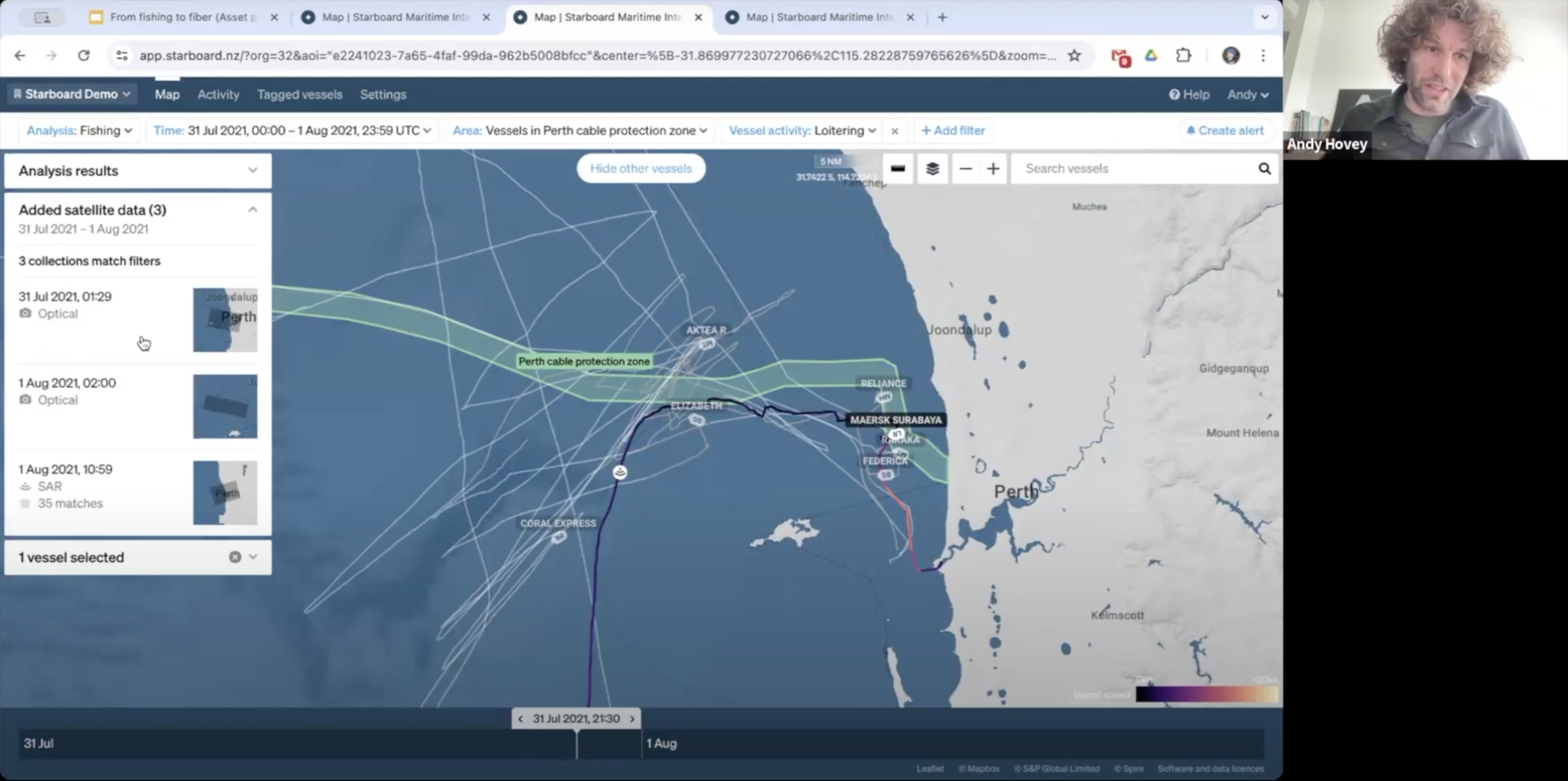
Andy, Partha, and Jim examine how maritime domain awareness technology and data, and the intelligence cycle can be applied to the protection of subsea cables.
Using practical case studies, they demonstrate how these tools can uncover risks and facilitate collaborative approaches to effective risk management.



Co-hosted by Andy Hovey (Chief Product Officer from Starboard), Partha Pratim Ghosh (Senior Presales Engineer from Planet), and Jim Thomason (VP Product Strategy from Saildrone).
Online training workshop: Risk assessing and investigating vessels in the South Pacific high seas
Learn more about Starboard developments to support complex analysis in large areas for monitoring, control, and surveillance operations.
Companies information from S&P Global Market Intelligence is available for vessels and all vessels within the fleet can be reviewed including their vessel information, risk indicators, authorisations, and behaviours.
Watch the webinar recording.
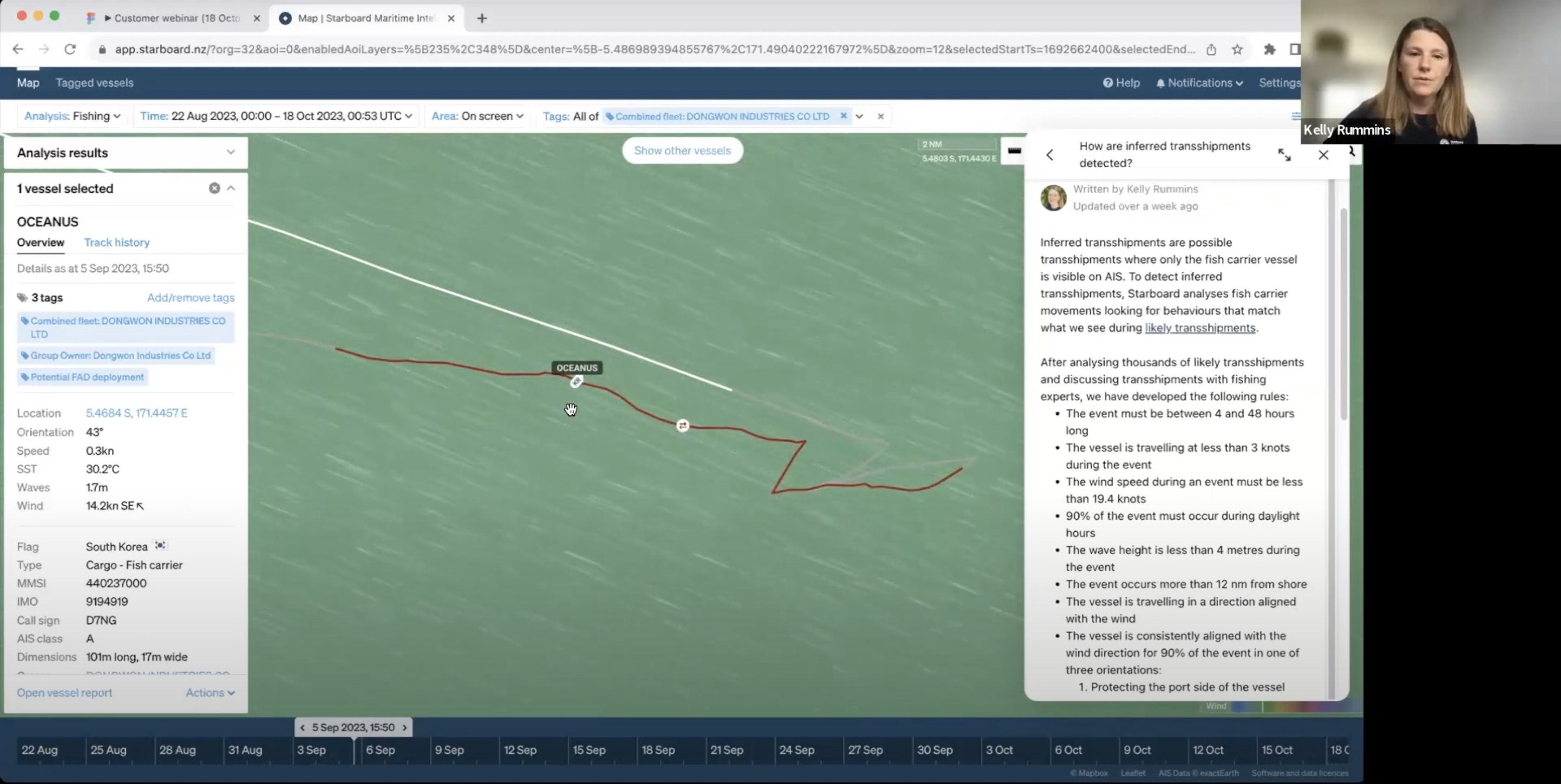
Andy Hovey and Kelly Rummins share new developments in Starboard and provide examples of analysis for fisheries in the South Pacific.

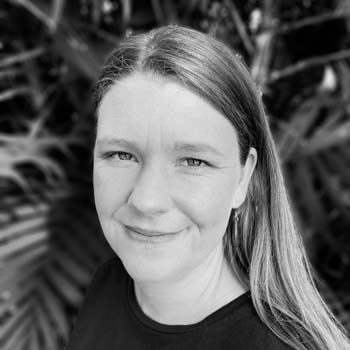
AIS: Harnessing state of the art maritime solutions to uncover hidden fishing vessel movements in the Pacific
Fisheries are of critical importance to the Pacific region with many nations working collaboratively to combat IUU fishing and increase traceability. Learn how Starboard Maritime Intelligence and Spire Maritime have joined forces to help tackle this issue in the Pacific Ocean, using real-time AIS, AIS Position Validation, algorithms, and machine learning.

The position of vessels can be uncovered using state of the art AIS maritime solutions. Watch to learn more about Spire’s AIS Position Validation and Starboard’s AIS buoy analysis.
Watch the webinar recording.
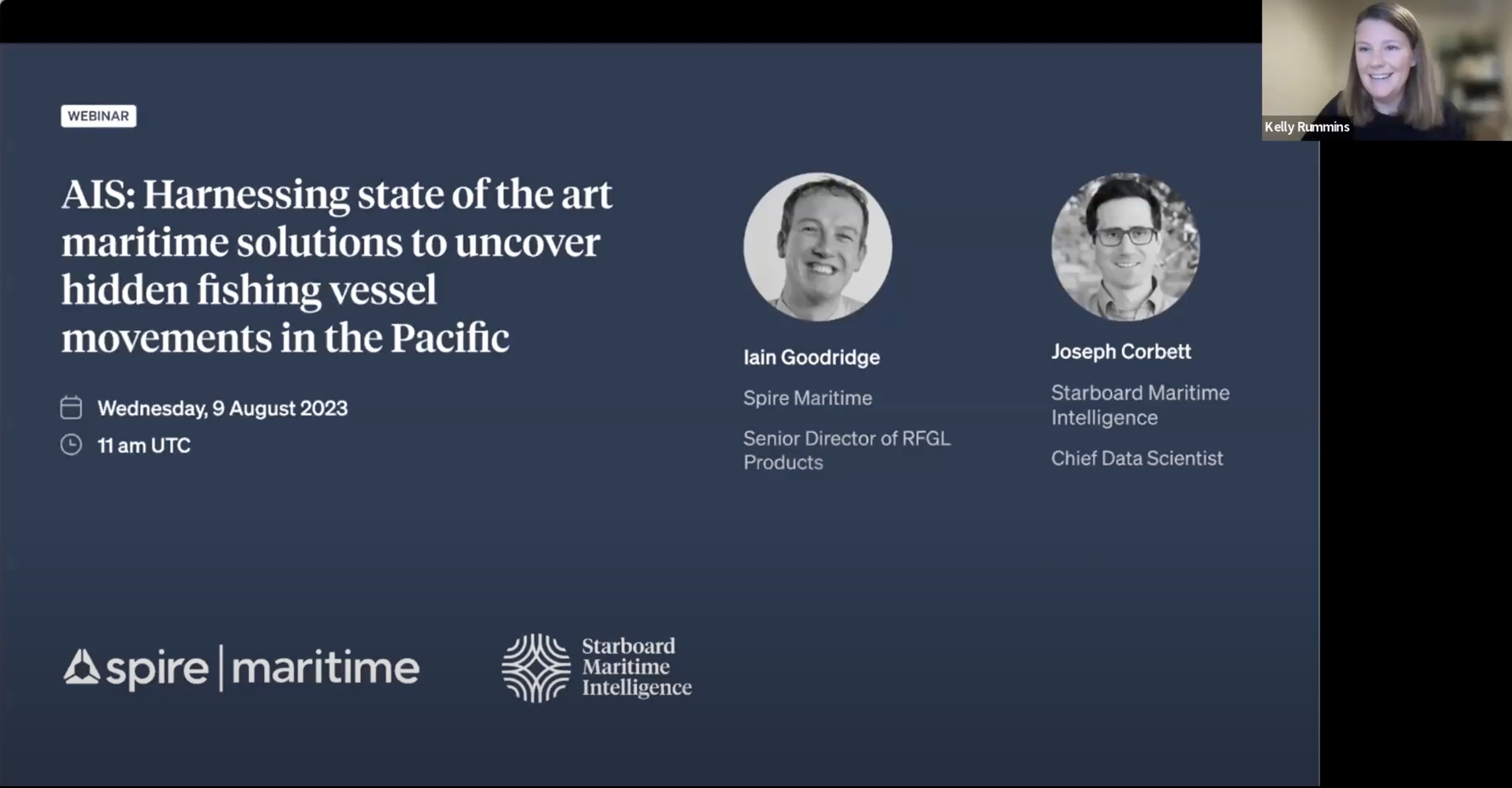
Iain and Joseph discuss how AIS can be used to understand fishing vessel manoeuvres and confirm compliance with measures to combat IUU fishing and uncover more intel on the location of fishing vessels that have gone dark on AIS.


Co-hosted by Iain Goodridge, Senior Director of Radio Frequency Geolocation (RFGL) Products from Spire Maritime and Joseph Corbett, Chief Data Scientist from Starboard Maritime Intelligence.
Online training workshop: Global analysis with new filtering capabilities and RFMO authorisations
Learn more about Starboard developments to support complex analysis on a global scale and how the integration of RFMO lists can support port state measures.
Fish carrier analysis and vessel movements are displayed globally over 6 months. Carriers are identified through integration with fishing registration records from 15 RFMOs.
Watch the webinar recording.

Andy Hovey and Kelly Rummins share new developments in Starboard and provide examples of analysis for fisheries, biodiversity protection, and global fleet management.


Read more about global, large area, and historical pattern analysis with complex filters →
From nets to networks: Exploring fleet-level IUU risk indicators with ownership information and behavioural analytics
Learn how analysts work with vessel information and vessel behaviours to identify high risk vessels.

Augmenting Starboard’s maritime domain awareness software with S&P Global Market Intelligence vessel information can help with challenges like unpicking complicated vessel ownership structures, identifying potential indicators of IUU fishing, and providing combined histories of vessel behaviour and changes in vessel information over time.
Watch the webinar recording.
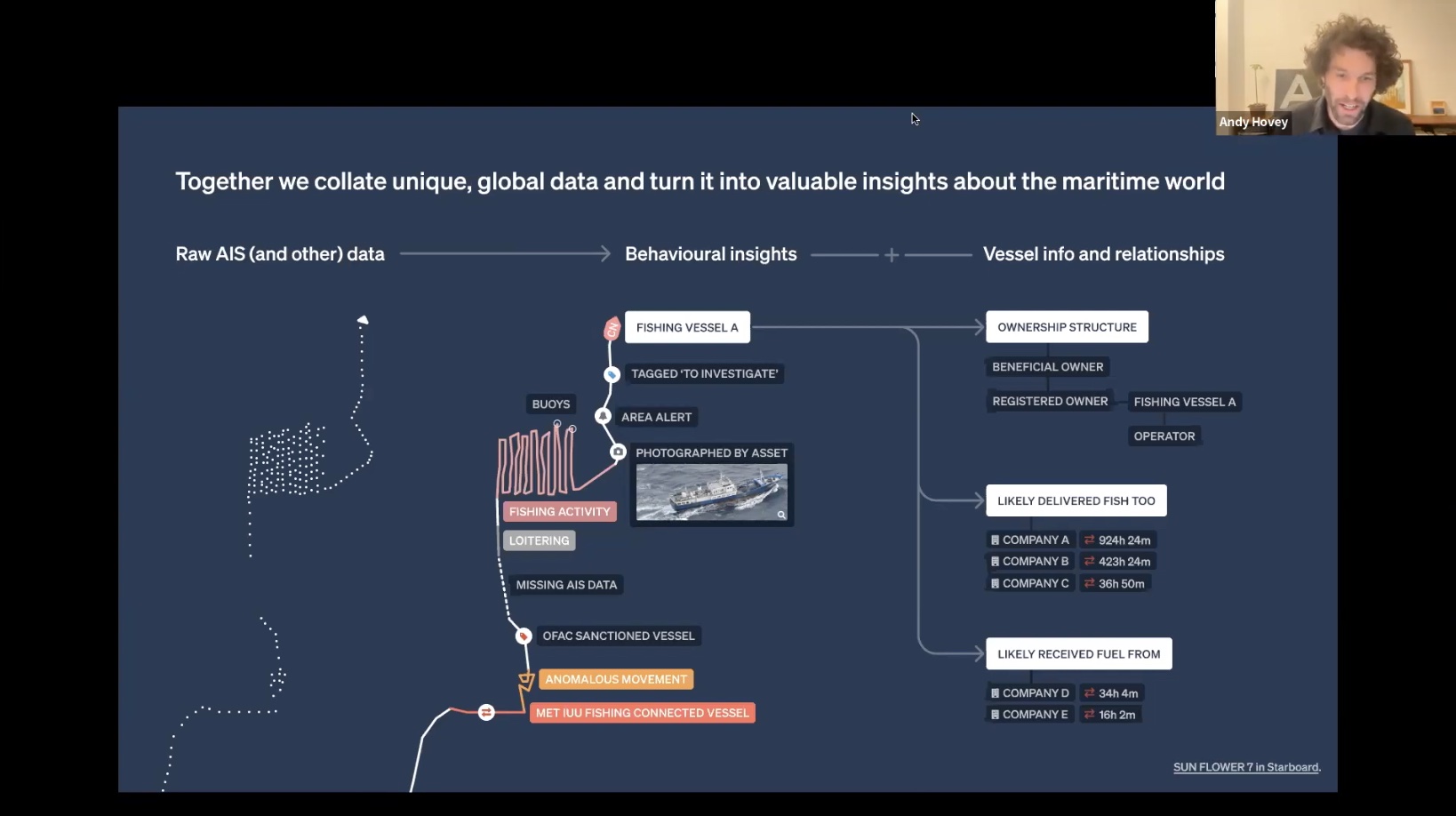
George and Andy discuss combining vessel ownership and vessel behaviours. They provide examples from the recent Sun Flower 7 case where a vessel was denied port use due to potential IUU fishing. Read more about Sun Flower 7 →


Co-hosted by George Devereese, Product Management Director for Maritime Intelligence Risk Suite and Maritime Portal from S&P Global Market Intelligence and Andy Hovey, Chief Product Officer from Starboard Maritime Intelligence.
The dangers of oversimplifying
IUU fishing risk
Global risk indicators, like the amount of time between port visits, are useful tools but they are only one part of an analyst’s investigative approach to identifying IUU risk. Learn how intelligence analysts investigated vessels for Operation Nasse in 2022.
These vessels exhibit several IUU risk indicators. Watch the webinar to learn more.
Watch the webinar recording.

In this webinar, Moritz and Mat discuss the relationship between technology and expert analysts for determining IUU risk indicators that lead to improved outcomes for operations on the high seas.


This 55 minute session allowed plenty of time for questions and provided examples from Operation Nasse 2022. Read more about Operation Nasse in this case study →
Finding the few among the thousands: Uncovering noteworthy vessels
In September we hosted two discussions with our science team on finding noteworthy vessels.
These 30 minute sessions allowed plenty of time for questions and were designed to help customers understand how these models work in the background and get feedback that will help shape future research in this area.
An area in Vietnam’s EEZ with over 2,000 vessels present on a single day. Applying the anomalous movement filter brings this down to just 4 vessels which may warrant further investigation.
Vessel networks
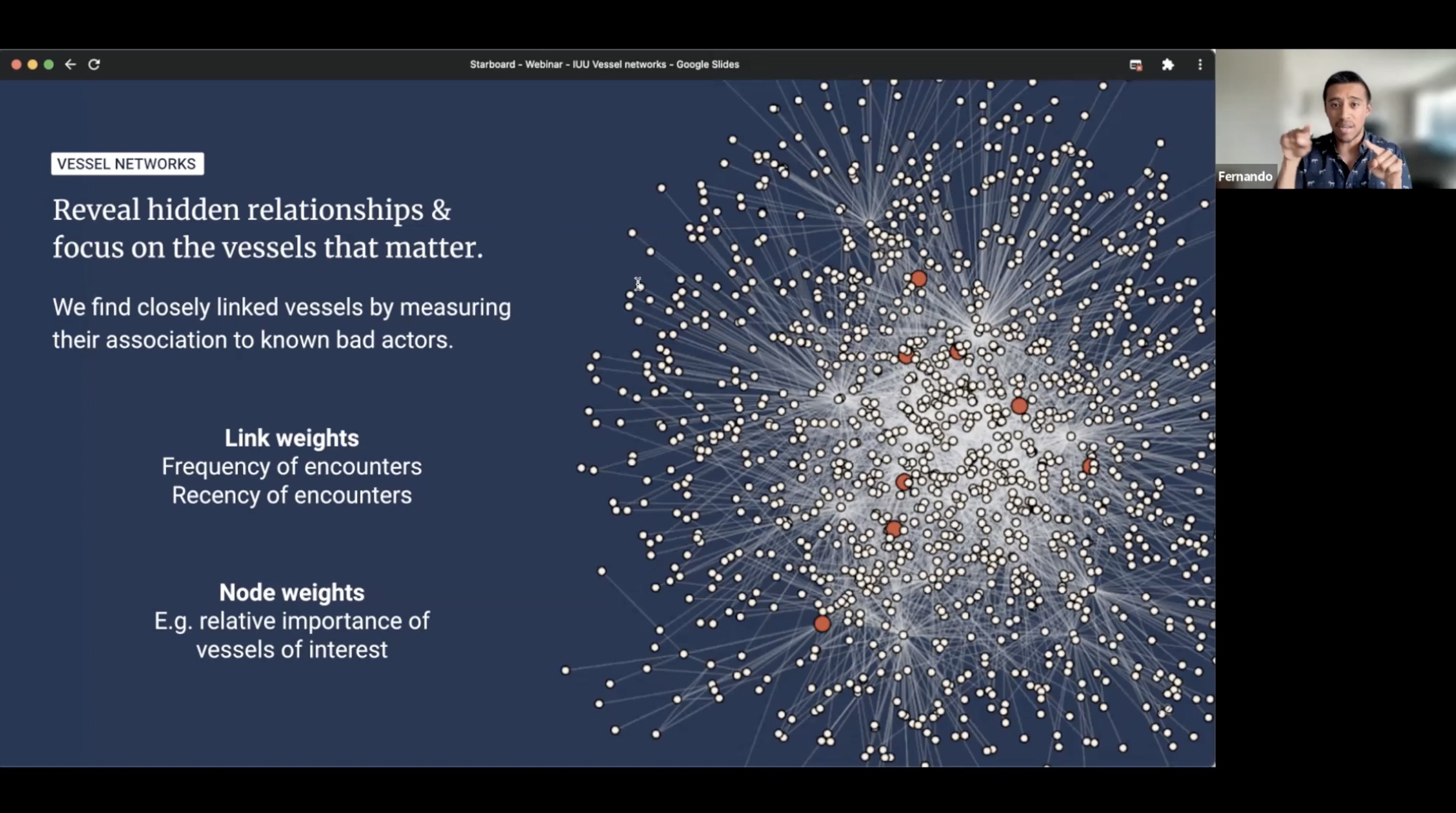
Fernando Cagua and Heather Deacon discuss vessel networks which uncover hidden on-water relationships to known bad actors in illegal, unreported or unregulated (IUU) fishing. The model starts with 30 vessels and uncovers a network of 5,000 vessels.

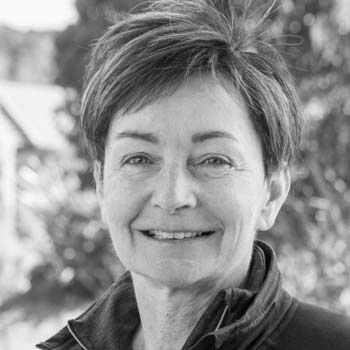
Anomalous movements

Joseph Corbett and Mat Brown discuss anomalous movements to identify previously hidden behaviours. These behaviours could be deviations from standard journey routes or unexpected deceleration and course changes.


